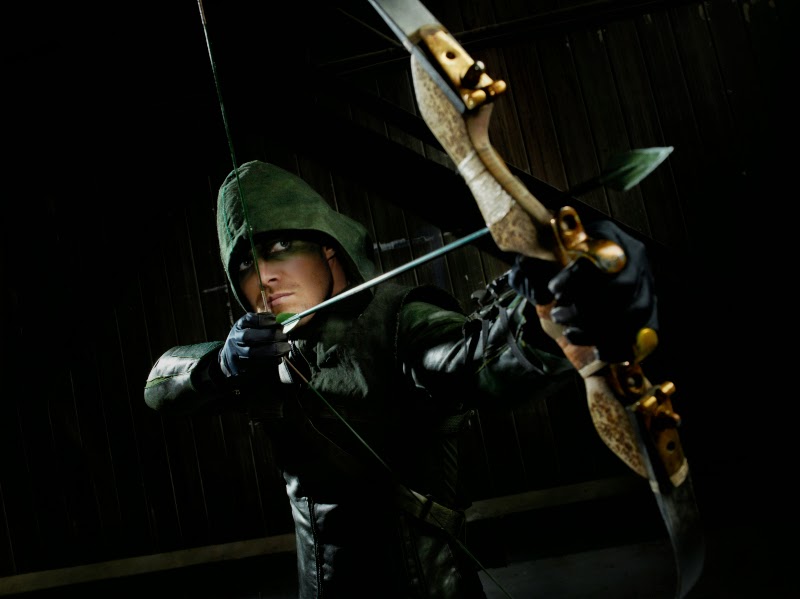Drawing a Bow: Arrow Deserves Respect
Spoilers ahead.
In comics, life and death are almost as predictable as the books having panels and dialogue bubbles. Major characters are killed for whatever reason (typically to increase readership) and are often brought back with little regard for the consequences of either action. Superman, Batman and Captain America are just a few of the major characters who have met their end in the comics, only to return later on. In some ways, this makes sense. When Superman died, there was the subsequent “Funeral for a Friend" and "Reign of the Supermen” storylines that brought new Supermen to fill the void and the original himself. Bruce Wayne as Batman was replaced as Dick Grayson as Batman, until Bruce Wayne came back (same goes for Captain America with Bucky Barnes).
Arrow on the other hand treats death differently. In the show, Shadow’s death is extremely meaningful. She was killed in an impossible situation, with Oliver given the choice to choose between her and Sara. He didn’t even actually “make” the choice, but his hesitation in the situation cost Shadow’s life. That’s something that Slade Wilson has refused to forgive, even five years later when he arrives in Starling City (although he’s probably been there longer planning his scheme). The same goes for the death of Moira Queen. She made the ultimate sacrifice in the interest of her children, preventing Oliver from being forced to make another impossible decision of his own. Slade gave him the same choice, only this time between his mother and sister Thea; the fact that he praised Moira’s courage offered Oliver a brief, false hope that he wouldn’t execute her.
Those choices have repercussions and the showrunners realize that. It’s those choices that make for rather compelling viewing, but at the same time give the reader a steady drip of drama. Another case that can be made about offering slow burn storylines is the introduction of the Flash. In Arrow, Barry Allen arrived for a few episodes under the guise of investigating a mysterious break-in, when actually he was trying to free his father and solve his mother’s murder. The show didn’t force Allen onto the viewer, nor did it have him race there and show up in a red spandex suit with a lightning bolt on it. Instead, it methodically presented him as necessary and as an important plot point; it didn’t take his appearance for granted. Sure, it did serve as a launching point for a dedicated Flash show, but his appearance wasn’t shoved at the viewer in some form of harsh cross-promotion.
The same can be said about multiple other DC characters showing up in Arrow, including Huntress, Deadshot, Amanda Waller and the Suicide Squad. A lot of these characters are relative unknowns to the viewing public at large, so they’re not really being included to bump ratings. There’s the possibility that some of their presentation has to do with fan service, in that hardcore fans of DC and Green Arrow will likely recognize the characters from the comics. The more realistic possibility is that the characters actually have some bearing on the direction of the show. In that case, their inclusion serves a much greater purpose in that they offer a variety of strong characters who interact in ways that make sense and reinforce an on-screen universe.
From the start, Arrow has been a show that seems extremely focused on creating a very intricate universe teeming with fascinating characters, all of whom tend to cross paths with one another. There are some aspects of teenage drama pervasive throughout, but that’s primarily because CW doesn’t forget who their main audience is. Despite that, Arrow provides a very solid foundation as a show with strong storylines and even stronger characters. The ending of the first season was one of the most intense episodes to date, owing largely to the sheer wow factor of everything happened in it. “Seeing Red” upped the ante on that one and was a pretty intense episode of Arrow in its own right, as it showed why the show is so strong at storytelling: it didn’t hold back.
It’s only the show’s second season, but it’s continued to be fantastic in just about all facets. Executive Producer Andrew Kreisberg has demonstrated that he’s keen on staying true to the source material in some ways, making the book feel like a comic book on screen. Most other ways though, the show defies comics, refusing to be a slave to retconning and doing things purely for ratings. And that’s why the show excels, because it’s not playing out like a comic book from a big publisher, which is a good thing in this case. It’s playing out somewhere between an homage to fans of the comic books and non-readers looking for good stories with great characters. Storylines aren’t hurried for the sake of anything really and characters who appear in an episode will often come back way later in a way that makes sense and shows that the creators have grand things in mind.
Arrow is a show that gives viewers a lot of quality stuff to sink their teeth into. If you’re not watching it, you’re really missing out on a pretty solid show. You’re also missing out on Felicity Smoak, who’s fiercely intelligent and beyond adorable. She’s just one of the many characters who represent strong, individual personalities that make the show worth watching.

Comments
Post a Comment